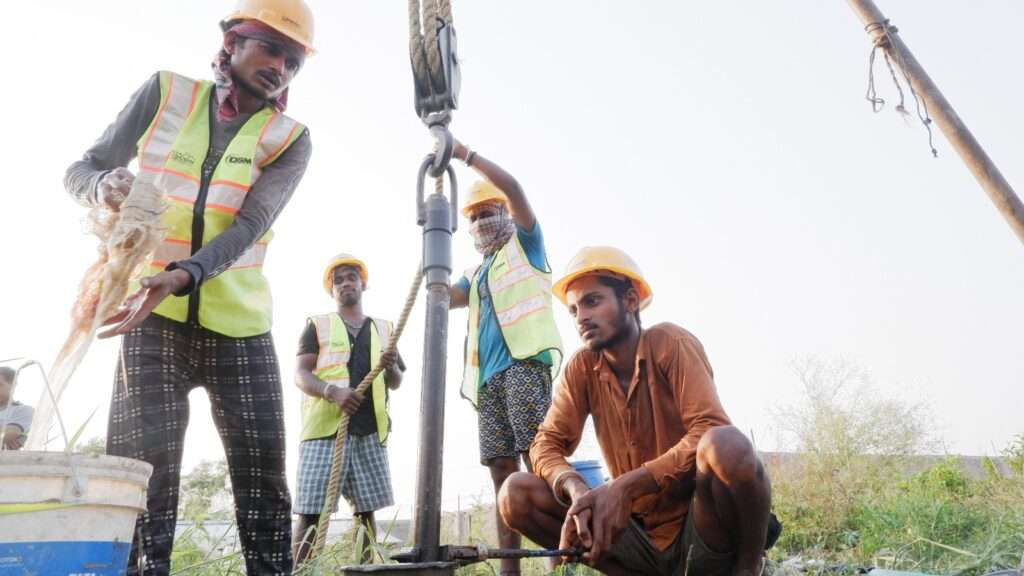10 Reasons Why Geotechnical Soil Testing Is Important For Your Home
If you’ve ever wondered what lies beneath the surface of your property, you’re not alone. Most of us are more focused on the aesthetics and functionality of our homes, often neglecting the very foundation they stand upon. Enter geotechnical soil testing – a crucial process that goes beyond the surface and can make a world of difference in the safety and stability of your home. In this article, we’ll explore ten compelling reasons why geotechnical soil testing is of paramount importance for your cherished abode.
What is Geotechnical Soil Testing?
Geotechnical soil testing is like a health check-up for your home’s foundation. It involves analyzing soil properties, such as density, moisture content, and strength, to understand how the soil will behave under various conditions. This information is invaluable for architects, engineers, and builders.
Understanding Soil Composition
Just as a baker needs the right ingredients for a perfect cake, builders need the right soil composition for a solid foundation. Geotechnical testing helps identify the types of soil present and whether they’re prone to shifting, settling, or expanding – all of which can affect your home’s stability.
Assessing Bearing Capacity
Think of your foundation as the legs of a table – they need to support the weight above. Geotechnical testing assesses the bearing capacity of the soil, ensuring it can withstand the load of your home without sinking or cracking.
Detecting Potential Foundation Issues
Wouldn’t it be great to predict and prevent foundation problems? Geotechnical testing can reveal early signs of trouble, such as uneven settlement or soil erosion, allowing you to take corrective measures before they turn into costly nightmares.

Planning Construction and Renovations
Dreaming of a home addition or a new garage? Geotechnical soil testing provides insights into soil stability, helping architects design structures that harmonize with the earth beneath and stand the test of time.
Mitigating Risk of Landslides
For homes situated on slopes, the risk of landslides is real. Geotechnical testing evaluates slope stability and suggests measures to prevent soil erosion and potential disasters.
Geotechnical testing costs can vary based on location and the complexity of the project. However, it’s a small investment compared to the potential costs of foundation repairs.
While it can’t prevent every issue, geotechnical testing significantly reduces the risk of unexpected foundation problems by identifying potential concerns early.
No, geotechnical testing is beneficial for both new construction and existing homes, especially before major renovations or additions.
The duration depends on factors like site accessibility and the number of tests needed. Generally, it takes a few days to a couple of weeks.
Geotechnical reports can be complex, so it’s recommended to have a professional, such as an engineer or architect, help you understand the findings.
Evaluating Drainage and Moisture Levels
Excess moisture can weaken soil, compromising your foundation’s integrity. Geotechnical testing helps assess drainage patterns and moisture levels, ensuring a solid base for your home.
Ensuring Proper Compaction
Just as you pack soil in a flower pot, builders need to ensure soil is compacted properly to avoid settling. Geotechnical testing guides construction processes, guaranteeing the right compaction for a sturdy foundation.
Analyzing Soil Corrosion
Soil acidity and corrosive chemicals can eat away at foundations over time. Geotechnical testing analyzes soil for corrosive elements, allowing homeowners to take preventative measures to safeguard their investments.
Compliance with Building Codes
Building codes exist for a reason – to ensure homes are safe and durable. Geotechnical soil testing helps meet these codes by providing data that demonstrates your home’s foundation is sound and capable of withstanding the challenges of its environment.
Investing in geotechnical soil testing is like peering into the future of your home’s foundation. It’s a proactive step that ensures your home remains a safe and stable haven for you and your loved ones. So, next time you admire your home’s beauty, remember that its strength lies in the unseen world beneath the soil.












